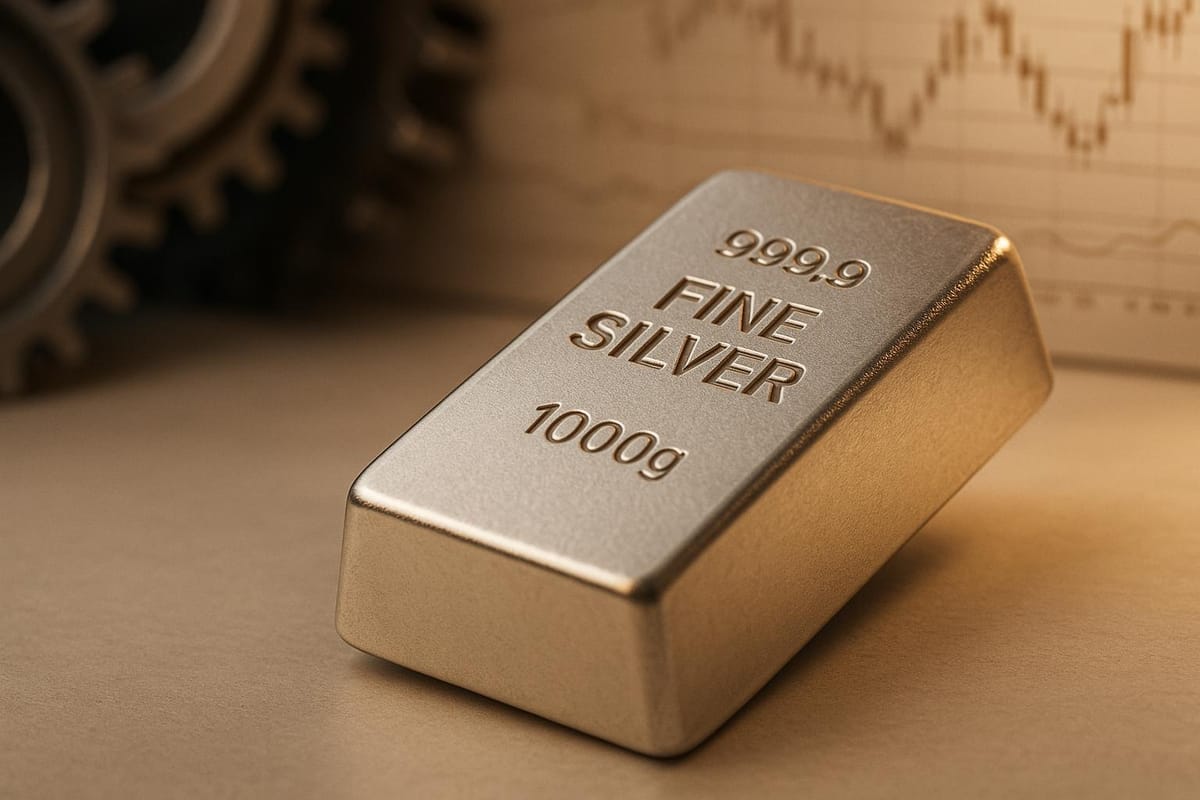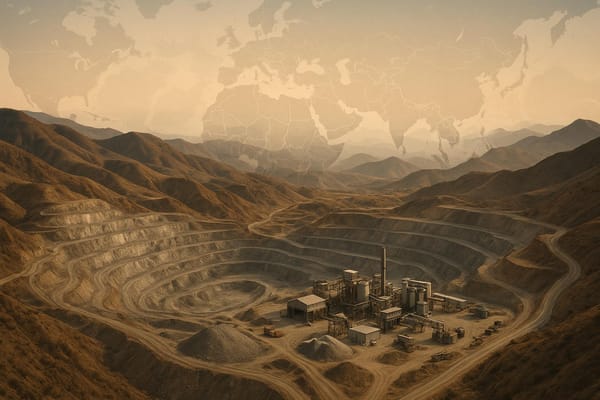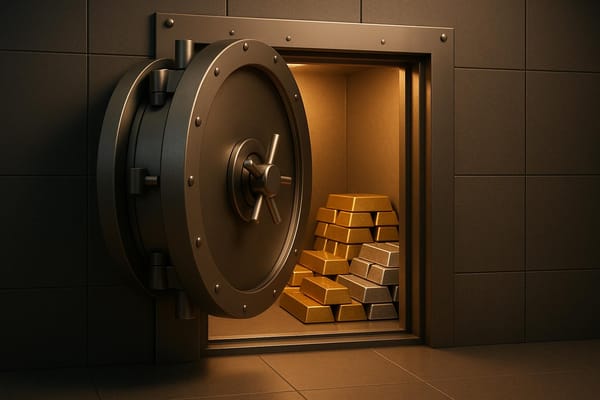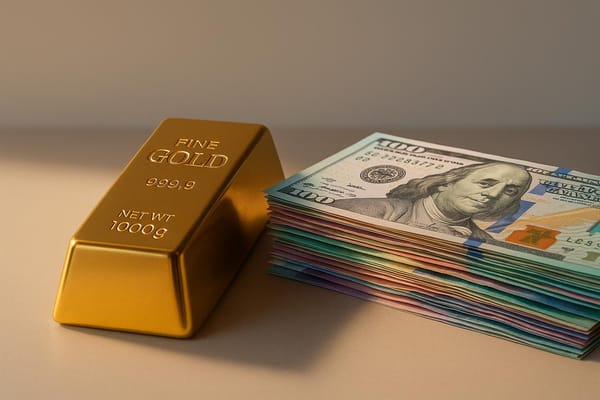Silver Price Drivers: Supply vs. Demand
Explore how supply constraints and shifting demand shape silver prices, driven by industrial use and investment trends amid economic fluctuations.

Silver prices are shaped by two main forces: supply and demand. On the supply side, silver is often mined as a byproduct of other metals like copper and zinc, which limits how quickly production can respond to price changes. Supply is further constrained by slow mine development, declining ore quality, and geopolitical risks in key producing countries. On the demand side, silver is used in industries like electronics, solar panels, and medical devices, while also serving as an investment during economic uncertainty. Demand shifts quickly, with industrial use staying steady but investment demand fluctuating based on market conditions.
Key takeaways:
- Supply challenges: Limited by mining constraints, slow project timelines, and energy costs.
- Demand dynamics: Industrial use is steady, but investment demand drives volatility.
- Current trends: Green energy and clean technology are boosting industrial demand, while inflation and monetary policy influence investment interest.
For investors, understanding demand trends is critical, as they are the main drivers of silver's price swings. Supply changes are slower and act as a stabilizing factor, but demand shifts can lead to rapid price movements.
Silver shares gold's glow: Can supply keep up with demand?
1. Silver Supply Factors
The silver supply chain operates under a unique set of dynamics compared to other commodities. Unlike oil or agricultural products, silver is often mined as a secondary product during the extraction of metals like copper, lead, and zinc. This creates distinct challenges and pressures on its pricing.
Price Responsiveness
Silver's supply is not particularly agile when it comes to reacting to price changes in the short term. Even when prices climb, mining companies can't immediately ramp up production. Why? Developing new mines takes years, and existing mines are often limited by geological factors. Since a large portion of silver comes as a byproduct of mining other metals, a slowdown in those primary operations can reduce silver output - even if silver prices are high. Recycling silver from sources like jewelry, coins, and industrial scrap can provide a slight boost during price spikes, but these contributions tend to be relatively small.
Historical Impact
A dramatic example of silver's supply constraints occurred in the late 1970s when the Hunt Brothers attempted to corner the silver market. Their aggressive accumulation drove silver prices from roughly $6 per ounce in early 1979 to over $50 by January 1980. This event underscored how sensitive the market can be to disruptions in supply.
Volatility Drivers
Several factors contribute to supply volatility. Many silver mines are decades old, and as the richest ore deposits are depleted, production naturally declines. For instance, Australia's Cannington mine saw its output drop as high-grade ore became harder to access. Energy costs also play a significant role - since silver mining is highly energy-intensive, sudden increases in electricity prices can lead to temporary production halts, adding to supply uncertainty.
Current Trends
In recent years, the development of new primary silver mines has slowed. Stricter regulations, permitting delays, and shifts in capital investment priorities have all contributed to this slowdown. As a result, supply growth struggles to keep up with rising demand. While technological advancements have allowed some operations to sustain output despite declining ore quality, these gains typically only mitigate - not eliminate - the effects of depletion.
Environmental and social governance (ESG) concerns further complicate matters. Some promising projects remain stalled due to environmental objections or opposition from local communities. Additionally, the geographic concentration of silver production in a handful of countries adds another layer of risk. Political instability, trade restrictions, or economic turmoil in major producing nations can quickly disrupt global silver availability.
These supply-side challenges create a complex backdrop for understanding how demand factors influence the silver market.
2. Silver Demand Factors
Silver demand comes from three main areas: industrial use, investments, and jewelry. Unlike supply, which tends to change gradually, demand can shift more rapidly depending on economic trends and market conditions.
Price Responsiveness
Different sectors react in unique ways to changes in silver prices. For industrial use, demand is often price inelastic - manufacturers usually keep buying silver even when prices rise because it makes up just a small fraction of their overall production costs. On the other hand, investment demand is much more sensitive, with investors reacting quickly to price fluctuations. Jewelry demand, however, is the most impacted by rising costs, as higher prices often deter consumers.
Historical Impact
Economic challenges have historically caused noticeable shifts in silver demand. For instance, during the 2008 financial crisis, silver saw a surge in safe-haven buying through ETFs. Similarly, the COVID-19 pandemic brought a decline in industrial silver use, even as investor interest surged amid uncertainty.
Volatility Drivers
Several factors drive silver's price volatility. These include technology trends, like the rise and fall of solar energy demand tied to policy changes, or currency devaluations, which often lead to increased silver imports as people seek to protect their wealth. Regulatory changes, such as adjustments to import duties, can also significantly influence demand.
Current Trends
Right now, industrial demand for silver is climbing, thanks to the growing adoption of electric vehicles and investments in clean energy. Meanwhile, digital investment platforms and low interest rates are drawing in new investors. These shifting dynamics, combined with supply constraints, highlight silver's evolving role in the market.
Pros and Cons
Supply and demand each influence silver pricing in distinct ways. By examining their strengths and weaknesses, we can better understand the forces behind silver's price movements.
| Factor | Supply-Side Forces | Demand-Side Forces |
|---|---|---|
| Price Responsiveness | Pros: Predictable and gradual changes make it easier to anticipate trends Cons: Adjustments are slow, leading to prolonged imbalances |
Pros: Quick corrections, especially in response to shifts in investment demand Cons: Prone to high volatility due to sudden changes in investor sentiment |
| Historical Impact | Pros: Significant supply disruptions often lead to clear, sustained price changes Cons: Physical mining limitations and lengthy development timelines restrict flexibility |
Pros: Reacts swiftly to economic events and policy shifts Cons: Can result in unsustainable bubbles followed by sharp corrections |
| Volatility Drivers | Pros: Supply shocks are typically short-lived, with markets stabilizing over time Cons: Regional mining concentration increases vulnerability to localized disruptions |
Pros: Demand comes from multiple sectors, offering varied growth opportunities Cons: Competing uses for silver can create conflicting price pressures |
These factors highlight how supply and demand shape silver's market behavior. Supply tends to move at a slower pace - mining delays often create a price floor during demand surges but can also extend periods of oversupply.
Demand, on the other hand, drives rapid price swings. While industrial use remains steady, investment demand can fluctuate wildly, spiking or dropping based on market sentiment.
The timing mismatch between supply and demand adds another layer of complexity. Supply constraints often take months or years to develop, while demand can shift dramatically within days. This disparity fuels much of silver's price volatility.
Additionally, global demand contrasts sharply with the regional nature of mining. Disruptions in major producing countries can have immediate global repercussions. Fixed mining costs help establish price floors, while demand varies across sectors - jewelry being the most sensitive and industrial use the least. These dynamics create a fascinating and unpredictable market landscape.
Conclusion
Throughout history, shifts in silver prices have been shaped far more by demand than by supply. While supply disruptions can influence the market, it’s the forces driving demand - especially investment trends - that have sparked silver’s most dramatic surges and steep declines over the years.
Supply constraints often act as a stabilizing factor, setting a floor for prices and supporting long-term growth. However, these changes tend to unfold gradually. In contrast, demand shocks can shake the market almost instantly, creating the kind of rapid price swings that silver is known for.
In today’s market, demand remains the key player. Industrial use is expanding, fueled by the rise of green energy technologies, while investment demand reacts sharply to concerns about inflation and shifts in monetary policy. For instance, the Federal Reserve’s interest rate decisions now have a more immediate impact on silver prices than updates on mining output from leading producers like Peru or Mexico.
For U.S. investors, this dynamic creates both opportunities and risks. Rapid price spikes often occur during periods of uncertainty, but they can reverse just as quickly if market sentiment changes. On the other hand, industrial demand provides a steady foundation, while investment-driven demand holds the potential for significant returns.
Looking ahead, the gap between supply and demand could grow even wider. The adoption of green technologies is advancing faster than new mining projects can come online. At the same time, investment demand will continue to be influenced by monetary policy, which shifts on a much shorter timeframe. This imbalance suggests silver prices will remain highly volatile, with demand-side factors driving the biggest moves - just as they have in past market cycles where sudden demand shifts and delayed supply responses caused dramatic price changes.
For investors, the takeaway is clear: while supply plays a supporting role, demand is the real driver of silver’s price performance. Keeping a close eye on demand trends, rather than solely focusing on supply metrics, will provide sharper insights into the market.
FAQs
How do political and economic challenges in major silver-producing countries impact the global silver supply?
Political and economic turmoil in major silver-producing nations can greatly influence the global silver supply. Situations like mine closures, labor strikes, or political unrest in top producers like Peru and Mexico often disrupt production, reducing the amount of silver available on the market.
On top of that, shifts in government policies - such as tougher environmental rules or new trade barriers - can hinder mining operations or restrict exports. These kinds of disruptions tend to create imbalances between supply and demand, leading to noticeable swings in silver prices.
How is the growing use of green energy technologies affecting silver demand?
The growing shift toward green energy technologies, particularly in the production of solar panels, is fueling a noticeable increase in silver demand. Thanks to its exceptional conductivity, silver is a critical component in photovoltaic cells, the backbone of solar energy systems.
This rising industrial demand, coupled with silver's reputation as a safe-haven investment, has significantly impacted its price trends. As renewable energy projects expand globally, silver's role in the green energy sector is likely to become even more prominent, which could further shape its market value in the years ahead.
Why is silver's investment demand more unpredictable than its industrial demand?
Silver’s demand as an investment is often less predictable because it serves a dual purpose: it’s both a financial asset and an industrial commodity. This unique combination means its price can be influenced by a variety of factors, including economic trends, interest rate changes, and shifts in market sentiment - all of which can change quickly.
On the other hand, the industrial demand for silver tends to be steadier. It’s largely driven by its consistent use in industries like electronics, solar energy, and manufacturing. While industrial demand does reflect broader economic conditions, it doesn’t experience the same sharp fluctuations that investment demand does, which is more closely tied to short-term movements in financial markets.



